
 An authoritative military publication specializing in light weapons!
An authoritative military publication specializing in light weapons!

[D Boy Column] Full Tracking of the USMC IAR Light Machine Gun Project (Part 1) Starting from Firepower Composition
Link to the previous article ↑↑↑
Selection Process of IAR Light Machine Gun (Continued)
The second phase of the IAR project: Bidding
Based on the verification results of the previous phase of testing, the US Marine Corps ultimately decided to equip a lighter, more reliable 5.56mm caliber automatic weapon. In 2005, they issued a request for proposal named “Non-Developmental Type 5.56mm Infantry Automatic Rifle,” moving from feasibility verification to a formal bidding process.
According to the requirements put forth by the Marine Corps, the IAR would be a 5.56mm caliber automatic weapon; the unloaded weight must not exceed 12.5 pounds (approximately 5.67kg), and ideally be below 10.5 pounds (approximately 4.76kg); it should use NATO standard magazines (M16 magazines) or universal high-capacity drum magazines. The Marine Corps planned to replace the M249 currently equipped in infantry squads and light armored reconnaissance battalions with the IAR, which would enhance the maneuverability of the automatic rifleman and have the capability to suppress or destroy targets within 600m for area targets and 500m for point targets.
This IAR bidding is referred to as the second phase of the IAR project, while the previous two rounds of feasibility tests are collectively known as the first phase of the IAR project. The bidding was officially released by the US National Small Arms Center (NSAC) in March 2006, with six companies responding: Colt, FN, GDATP, HK, Knight’s Armament Company (KAC), and LWRC.
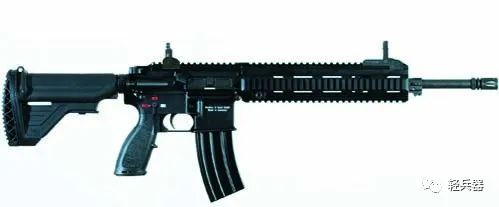
HK IAR is the HK416 with a 419mm long barrel and long handguard
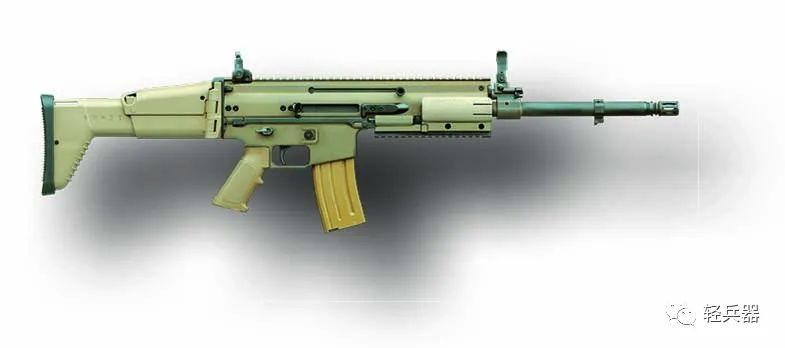
FN IAR has a noticeably thicker barrel than the standard FN SCAR-L
The third phase of the IAR project: Awarding Contracts
By April 2008, the US Marine Corps announced the closure of the IAR bidding, and speculation began that the IAR plan was entering its third phase.
On December 22, 2008, HK, FN, and Colt signed four competitive procurement contracts with the US Marine Corps for five years. These three companies were required to provide samples for testing by the Marine Corps within four years, and the company that won the bid would supply 6,500 IARs to the Marine Corps.
The IAR project has been conducted very quietly, and the specific testing processes during the second and third phases have not been made public, so there is little understanding of the performance of the various candidate models. However, as each manufacturer has been promoting their products, some insights can be gleaned from the contracts publicly available on the US Department of Defense procurement website and the samples released by manufacturers at different times.

Colt’s new IAR sample announced in mid-2008
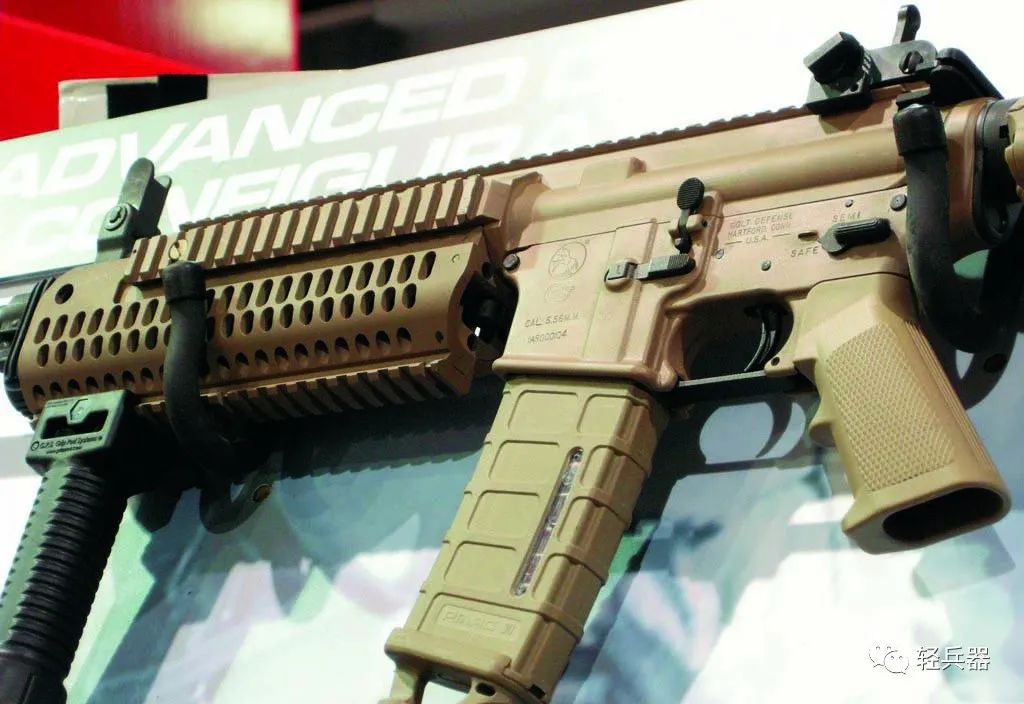
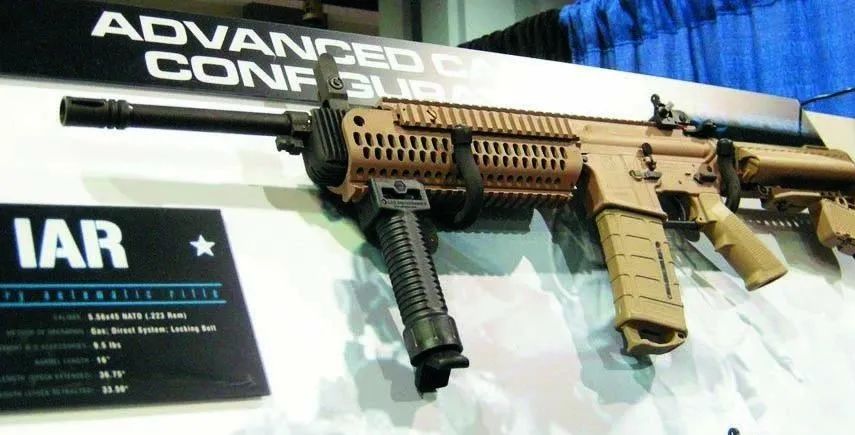
Colt’s new IAR sample exhibited at the 2008 AUSA Annual Meeting
In the first phase of the verification tests, the US Marine Corps simply selected some existing weapons for comparison. The Colt AR selected at that time was too heavy, so the sample Colt provided in the IAR bidding was a newly developed heavy-barrel carbine based on the M4 carbine. The sample gun announced in mid-2006 featured a quick-detach barrel and used Colt’s newly developed short-stroke gas piston system. However, by 2008, Colt announced another new IAR sample. This gun’s appearance differed significantly from the previously announced sample and reverted to a traditional gas-operated working principle instead of the piston system, reportedly to further reduce weight. Colt’s spokesperson also stated that as long as proper maintenance is performed, there is no need for improvements to the gas system. Additionally, the quick-detach barrel feature was abandoned in favor of adding a large heat sink beneath the barrel. This gun did not use Colt’s latest gas regulator; if such a regulator were installed, it could adjust the rate of fire. According to Colt’s spokesperson, this gas regulator could potentially be added later. Of the four IAR contracts publicly available on the Department of Defense procurement website, Colt holds two, leading me to speculate that either both of Colt’s IAR samples made it to the final stage, or the last IAR sample has two different proposals.
As for the HK IAR sample, it was not the G36 from the first phase but was modified from the HK416, which better fits American usage habits. The biggest difference between the HK IAR and the standard HK416 carbine is the use of a 404mm long heavy barrel and a longer handguard.
The FN company’s IAR sample was modified from the original FN SCAR-L (Mk16), including a heavy barrel and an integrated bipod. The FN IAR’s most notable feature is its two firing modes: closed-bolt for single fire and open-bolt for automatic fire. The purpose is to provide the shooter with precise single-shot capability while allowing for faster cooling during automatic fire, avoiding overheating that could lead to cook-offs or other failures.
Other Companies’ IAR Samples
In addition to the three companies mentioned above, two other companies have also released IAR samples, although they did not make the final cut, their samples are noteworthy.
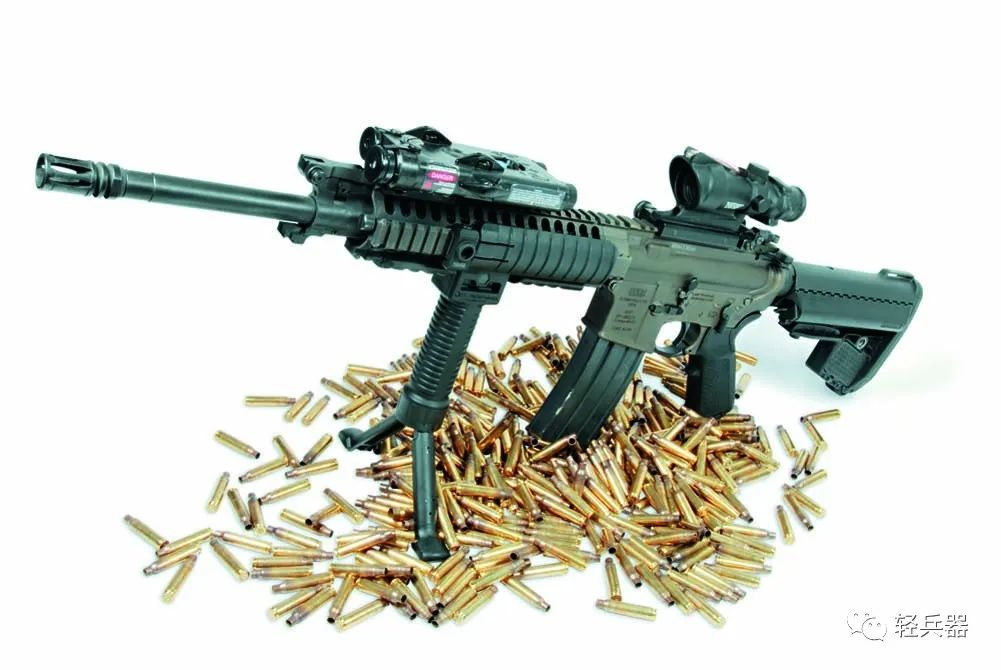

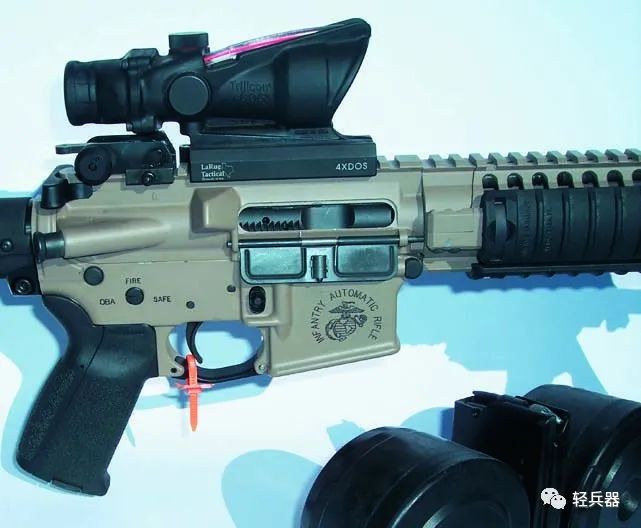
LWRC IAR, designated as M6A4 by LWRC, was sold after being eliminated from the competition, available in both 5.56mm and 6.8mm SPC calibers

LWRC IAR and its gas piston system
The IAR sample from LWRC is also based on AR-style weapons, derived from the LWRC SRT (a gas piston M4 carbine from the company). The LWRC IAR shares a feature with the FN IAR—closed-bolt for single fire and open-bolt for automatic fire. This gun does not come with a bipod but features a telescoping bipod integrated with a vertical grip. The LWRC IAR was featured in Season 3, Episode 1 of the Discovery Channel’s “Future Weapons,” where its advantages and the shortcomings of the M249 were discussed. The Marine Corps adopted the IAR due to the M249’s lack of maneuverability in urban combat, and the easy targeting of the M249 operator by enemy snipers, while the IAR is lightweight and flexible, making its operator less noticeable to snipers.
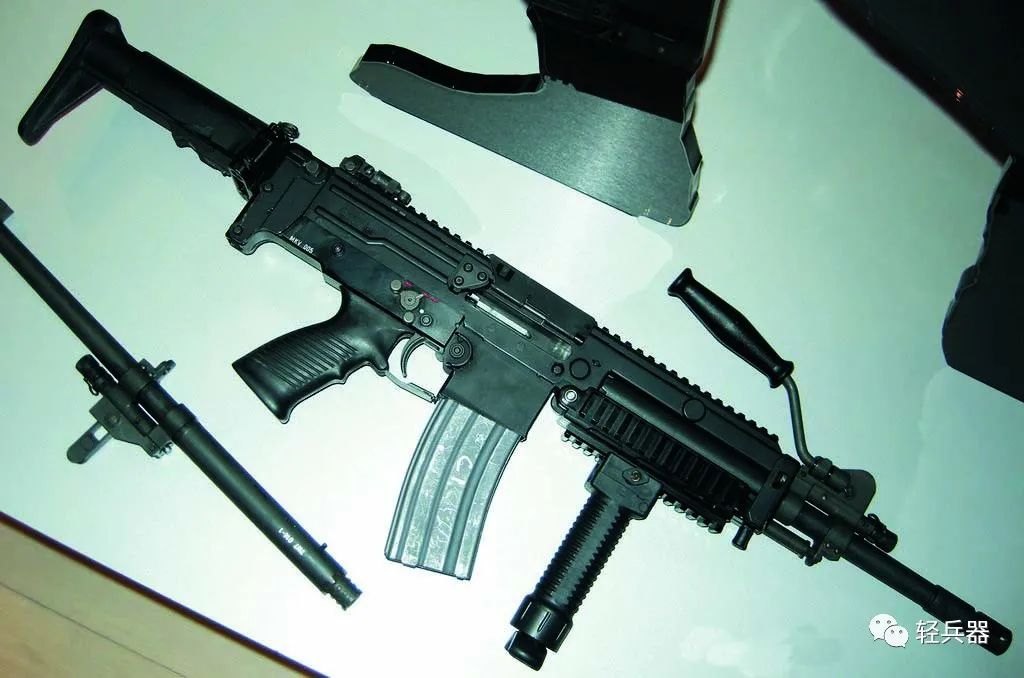
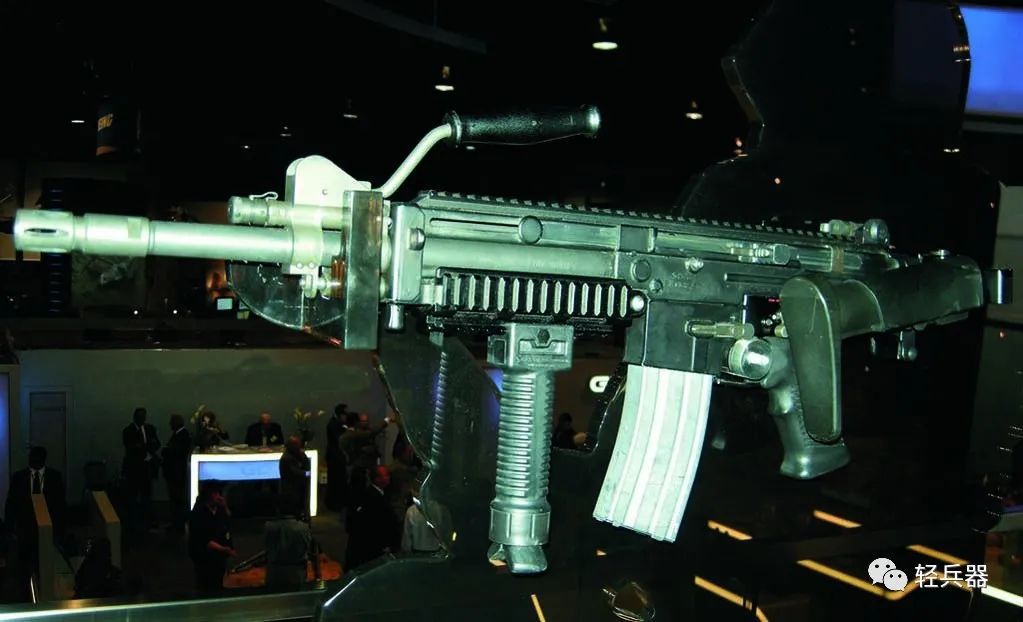
GDATP IAR is the latest improved version of the Ultimax 100 light machine gun. Although it did not make it to the IAR project, it has its unique characteristics.
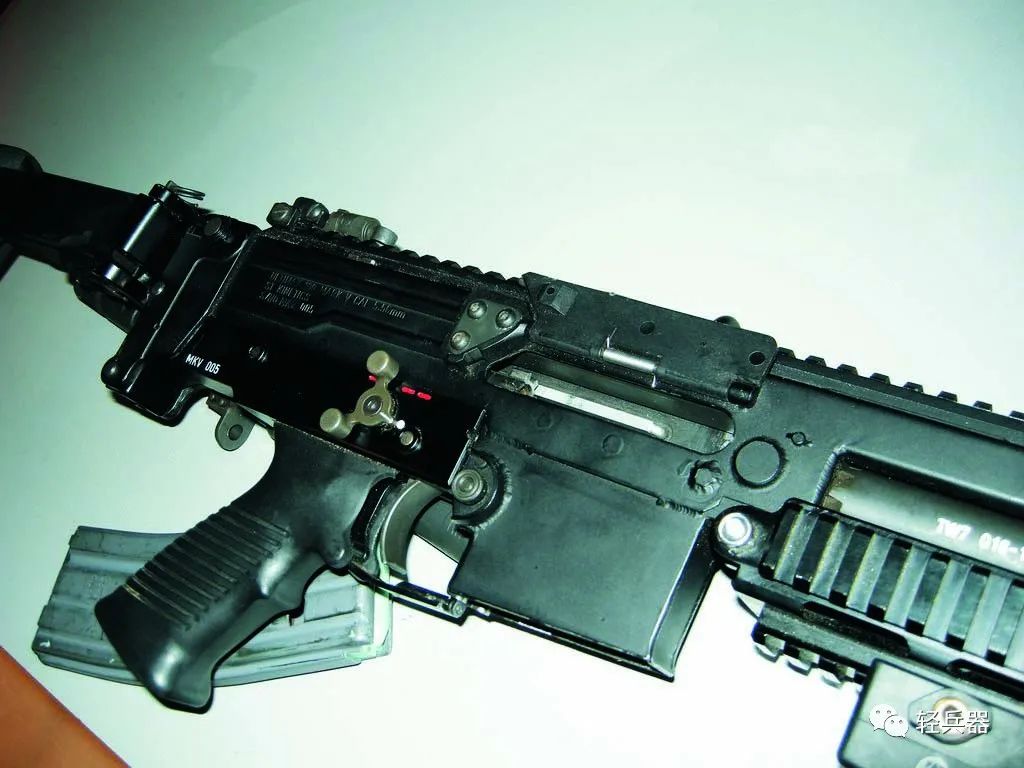
Close-up of GDATP IAR’s fire selector and magazine well
General Dynamics Armament and Technical Products (GDATP) IAR is essentially the Singapore Ultimax 100 Mk5 light machine gun. Since the US military will not procure weapons entirely produced overseas, and Singapore’s STK has no factory in the US, they turned to GDATP for bidding. The main differences between this model and the original gun are: improved magazine well to use NATO standard magazines or Beta C-MAG drums as per bidding requirements, added Picatinny rails, and replaced the rear sight with a detachable folding sight, with the front sight also being foldable. These changes to the sights were clearly made in response to complaints about the low aiming baseline not fitting the physique of Americans during early testing. The stock was also improved to be both collapsible and foldable. The firing mechanism was enhanced with a fire selector, allowing both single and automatic firing modes, unlike the original model which could only fire automatically. These are clearly in line with the IAR bidding requirements.
Analysis and Reflection on the Selected Samples
It is noteworthy that, based on the selected IAR samples, the US Marine Corps does not seem to require the IAR to have a quick-change barrel feature. The US military has always believed that machine guns must be capable of quick barrel changes to handle prolonged fire. However, for the IAR, the Marine Corps clearly prioritizes mobility over sustained firepower. Interestingly, battlefield experience suggests that light machine guns are often closer to the enemy than other fire support weapons, making them primary targets for the enemy. Light machine guns often fire a few bursts from one position before needing to relocate, so in actual combat, the chances of a light machine gun overheating to the point of a red-hot barrel are quite low. Clearly, the IAR is positioned to provide fire support at close range. According to the latest reports, this batch of IARs will only replace 2,000 of the 10,000 M249s currently used by the US Marine Corps, while retaining 8,000 M249s in service. This means that in an infantry squad with three M249s, one M249 will be replaced by two IARs, so equipping IARs will not reduce the firepower of the Marine Corps infantry squad.

Performance specifications of the Colt, FN, and HK samples that made the IAR project cut
The infantry squads of the US Army only have two fire teams, so the Army does not intend to follow the Marine Corps and adopt the IAR. They believe that replacing a 200-round belt with a 30-round magazine would lead to insufficient fire suppression capability. The Army’s recent plans involve using lighter belt-fed light machine guns, such as the Mk46 light machine gun, while long-term plans include developing a lightweight squad automatic weapon (LSAT) that fires caseless ammunition.
(This article was published in the “Light Weapons” magazine, August 2009 issue, with edits made to the public account)
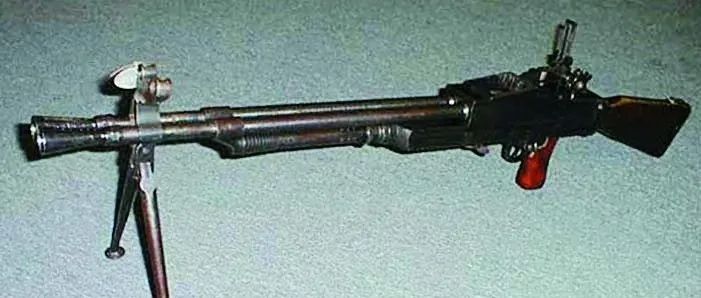
Inserting a 5.56 magazine: Czech ZB26 7.92mm Light Machine Gun Biography (Part 6) The Red “Czech Style” and the New China Modified Version
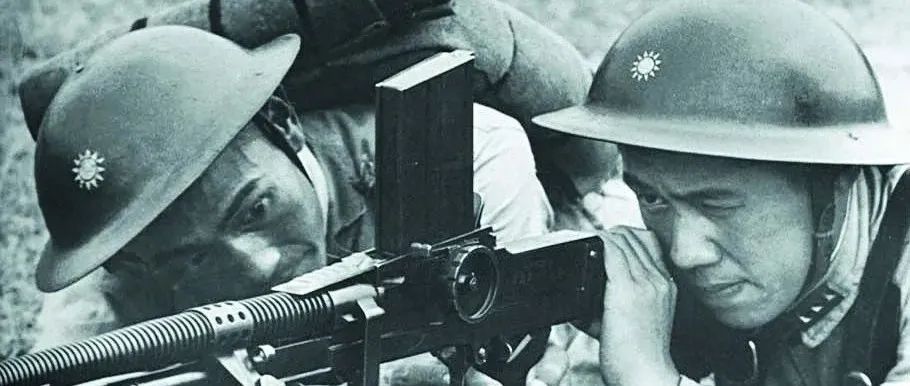
Precious historical materials on the imitation and equipment of the “Czech Style” in China: Czech ZB26 7.92mm Light Machine Gun Biography (Part 5)
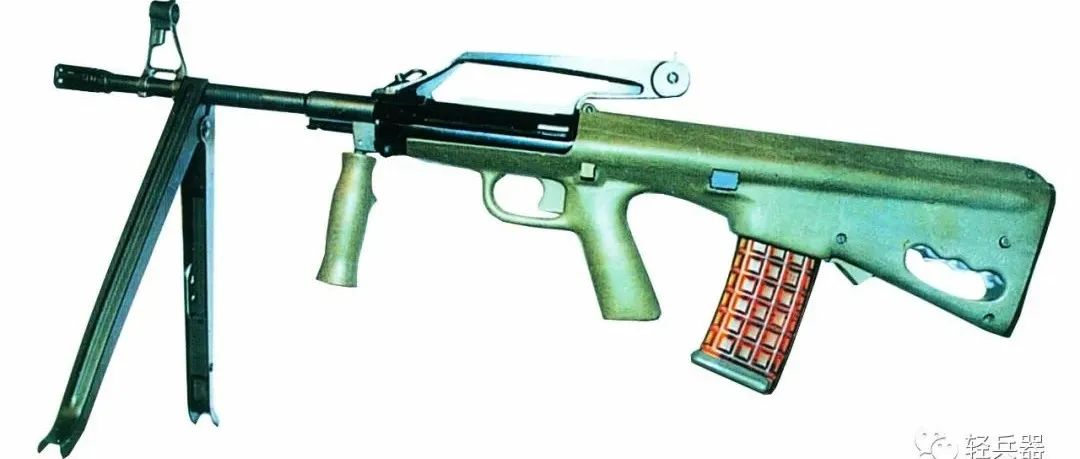
AUG Makes Me Want to Hit Someone: The Secret History of the Taiwan T68 Rifle
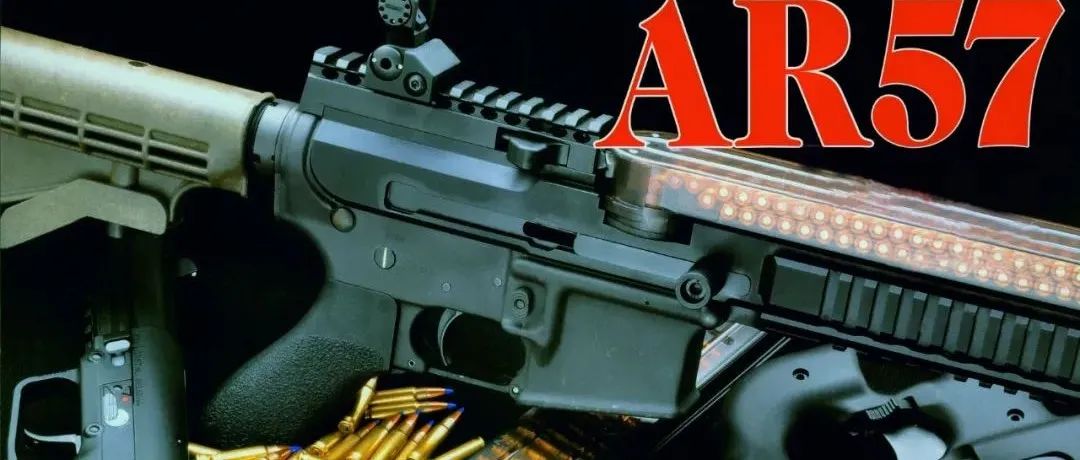
Seeing the P90 magazine, I know things are not simple: AR57 Submachine Gun
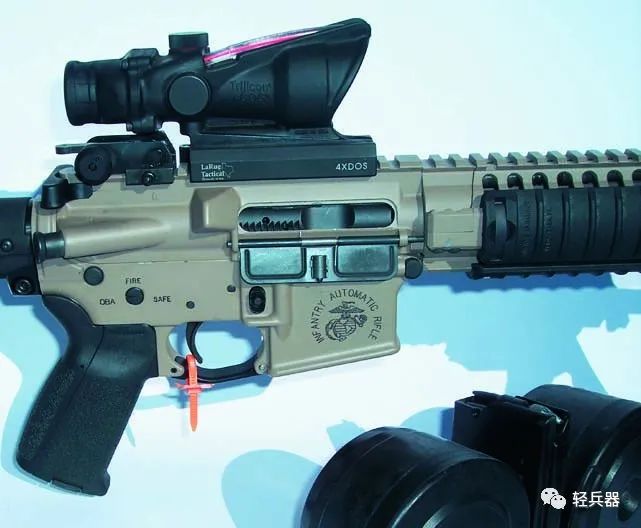
A comprehensive understanding of this strange weapon: The Dual Sun—The Meridian Twin Axes
Editor: Zeng Zhenyu Li Hao
Proofreader: Wei Kaigong
Official Weibo of Light Weapons: @LightWeapons
Light Weapons Headline Account: Light Weapons
Light Weapons Kuaishou Account: QBQ_208
Light Weapons Douyin Account: qingbingqi

A professional and attitude-driven public account, welcome to scan the QR code to follow and receive your most authoritative light weapon guide
